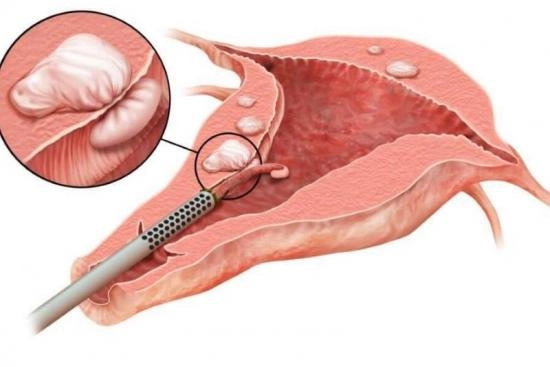Myomectomy is the surgical removal of uterine fibroids (benign tumors of the uterus). This surgery is considered when uterine fibroids are symptomatic and troublesome.
Contact us and get a free quote for a myomectomy in Turkey!
We're Here to Help.

- Women who suffer from symptoms caused by uterine fibroids
- It depends on the size, location and number of uterine fibroids, as well as the surgical technique used
- About 80 %
Myomectomy in Turkey: What is it?
Myomectomy is a surgical procedure to remove uterine fibroids while preserving the patient's uterus.
Uterine fibroids, also known as myomas, are non-cancerous tumors that grow in the muscle of the uterus in women. Although fibroids are usually benign, they can cause symptoms such as pelvic pain, heavy periods, and fertility problems.
Symptoms of uterine fibroids (myomas)
Fibroid surgery is considered when the fibroid causes symptoms such as:
- Heavy menstrual periods or periods that last longer than normal;
- Pelvic pain and discomfort;
- Constipation and bloating;
- Anemia that is resistant to medical treatment;
- Infertility;
- Pain during sexual intercourse;
- Difficulty urinating.
In addition, when fibroids are numerous, they can alter the ability of the uterus to contract and in some cases grow to a considerable size (up to 20 cm).
The symptoms of fibroids are not always obvious. In fact, many patients are asymptomatic carriers of fibroids, even large ones, but located in non-tender areas of the uterus. Conversely, a small fibroid located in a sensitive area such as the endometrial cavity can cause significant symptoms and even serious complications that should not be underestimated.
If the woman is young, myomectomy is usually preferred to a hysterectomy (removal of the entire uterus) to preserve a possible future pregnancy.
Myomectomy Techniques in Turkey
Myomectomy in Turkey can be performed in several ways, including laparoscopy, robotic, hysteroscopic, or abdominal technique.
The technique used depends on the size, location, and number of fibroids present in the patient.
The laparoscopic technique
In laparoscopy, a small incision is made in the belly button, and other small incisions are made in the abdomen to insert surgical instruments and a camera. The camera allows the surgeon to see the inside of the uterus and remove the fibroids with a special instrument.
Robotic technique
Robotic myomectomy is a technique in which a robot is used to perform the procedure. This technique is often used for the most complex cases or patients with a history of abdominal surgery.
Abdominal Myomectomy
Abdominal myomectomy involves a larger incision in the abdomen to allow access to the uterus. This technique is often used for large fibroids or in cases where there are multiple fibroids.
Hysteroscopic technique
This technique involves removing fibroids that are located inside the uterus using a hysteroscope. A hysteroscope is a thin, lighted tube with a camera on the end that is inserted through the cervix into the uterus. This technique is ideal for small fibroids that do not protrude into the uterine cavity.
Potential Risks of Uterine Myoma Removal
Myomectomy is generally considered a safe and effective procedure for treating uterine fibroids in women who wish to preserve their fertility. However, as with any surgical procedure, there are potential risks such as bleeding, infection, and anesthesia-related complications.
Recovery from myomectomy varies depending on the technique used and the complexity of the procedure. Patients can usually return to work within two weeks of the procedure, but it is recommended that they not engage in strenuous physical activity for several weeks after surgery.
Although risks exist, the benefits of the procedure may outweigh the drawbacks in many cases. If you think you may have uterine fibroids or have symptoms related to this condition, consult with our doctors to see if a myomectomy is an appropriate option for you.
Myomectomy and Fertility
In some cases, myomectomy can improve a patient's fertility by removing obstacles to pregnancy, such as fibroids that can block the fallopian tubes or deform the uterine cavity. In other cases, however, myomectomy may result in impaired fertility because the surgery can damage uterine tissue, which can lead to scarring and adhesions.
The type of myomectomy may also play a role in postoperative fertility. Hysteroscopic myomectomy, a less invasive technique, does not require cutting the uterus and is often associated with faster recovery and better fertility preservation. In contrast, abdominal myomectomy or laparoscopy with larger incisions can result in loss of uterine tissue that may affect fertility.
Therefore, it is important to discuss the best treatment option for fibroids with your doctor, taking into account your fertility goals and medical history.
After myomectomy, a fertility evaluation may be recommended to determine if the patient has any underlying problems that may affect her ability to conceive. In some cases, assisted reproduction, such as in vitro fertilization, may be recommended to help the patient conceive.
Share this page
